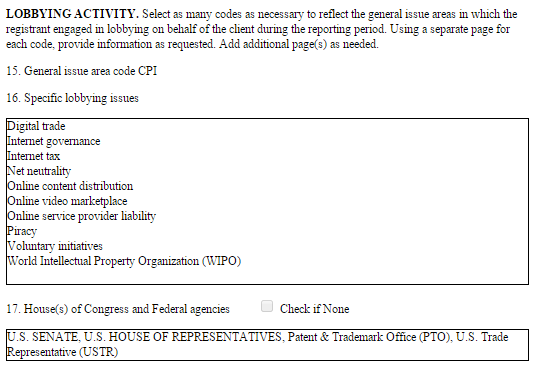Torrentfreak: “Scientist Deliberately Pirates Art on a Nanoscopic Scale” plus 1 more |
| Scientist Deliberately Pirates Art on a Nanoscopic Scale Posted: 02 Nov 2014 01:02 AM PDT
This ease of copying has provoked legal aggression and endless debate as to the purpose of copyright law and its role in protecting the interests of artists. In particular, entertainment industry companies often declare that no matter what its nature, infringement negatively affects those creators. But is that always the case? A new project developed by Dr Robert Hovden at Cornell University aims to provoke discussion on that very topic by pushing replication of content – and indeed the law – to their absolute limits. A self-confessed gradeschool downloader and former undergraduate at Jet Propulsion Labs, NASA, Hovden went on to study nanoscience at Cornell. His passion for studying the world at the tiniest possible levels has given birth to “When Art Exceeds Perception”. The project, which will be exhibiting at Cornell University this November and December, explores the implications of copyright infringement, replication and plagiarism when the ‘pirated’ works are so tiny they cannot be perceived by human senses. To this end, Hovden has ‘pirated’ four famous works of art by scribing them into the surface of a silicon crystal using a focused ion beam. The features in the artwork replicas are five hundred times smaller than the eye can perceive and five times smaller than the wavelength of light. The Focused Ion Beam device used to ‘pirate’ the artwork
“To take a piece of art, copy it, and share it with the world without the original artists' permission is traditionally viewed as wrong and, in most cases, violates copyright laws,” Hovden says. “Such laws are intended to protect an artist's financial interests and This leads to Hovden’s big question: When a copyright work is copied, framed and presented for public consumption on a nanoscale as it will during November and December at Cornell, has something been taken from the original artist? “Thus far, people have discussed this project from a science or art perspective, but I believe that the readers of TorrentFreak are best equipped to understand this work. The exhibition is highly conceptual – completely beyond perception – and critical of current views on replication,” Hovden told TF. Project creative assistant Michael Blaney informs us that the artworks involved are The Treachery of Images by René Magritte, Le Platane by Henri Matisse, M.C. Escher’s Regular Division Of The Plane With Birds and Laylah K. by Joy Garnett. Laylah K. by Joy Garnett, original and nanoscale
“The replicated pieces chosen are from recent, famous artists where copyright is relevant to the discussion,” Hovden says. “Joy Garnett is a fantastic creator and one of a few fine artists who release work under a Creative Commons license. She sometimes paints from the photographs of others to make something uniquely new – a benefit of a free culture society. The nanoscale replica of Garnett’s work is the only one which I retained a low resolution micrograph image of. “The Escher is a lovely tessellation with symmetries that can be found in the crystalline silicon substrate on which it was etched and Magritte’s ‘The Treachery of Images’ was chosen for a technological modernization and extension of his original concept. The Matisse is a best-selling serigraph at MOMA.” The works of art, on a nanoscale
The concept of infringement at an imperceptible level is an intriguing one. Are artists affected by ‘pirate’ music that’s too quiet to be heard or by entire movies played in a fraction of a second, for example? “I think your idea of an audio performance of ‘pirate’ music is in the same vein as this exhibition, but raises some new concepts,” Hovden told TF. “The audio is quiet, with a signal to noise ratio that changes with distance. Maybe a microphone could record the sounds we can’t hear at close distances but the sound quality will drop with distance (actually, rapidly with the square of the distance). There will be a point where even a microphone cannot ‘hear’ the sound and the information is lost. “So, does the extent of a public performance change? If a thousand people are present, but none – or only a couple – can hear it, is it a public performance? Also, you could play with the idea of translating the music to frequencies higher than the human ear can hear. It is loud, but not perceived – maybe by an animal.” And the complexities and fascination of Hovden’s project only intensifies when one realizes that we’re all engaged in pirating on a nanoscale, quite possibly at this very moment. “With the modern computer, most of us are continually replicating information – often without permission – in the nanoscale bits of our hard drives and memory. Not only small, the information is encoded in complex arrays. “Here, I wanted to make something that is a direct representation of the original artwork – just like the low-amplitude ‘pirate’ music performance. The verdict is still out on how this type of work will be received (tolerated),” he concludes. Those interested in experiencing When Art Exceeds Perception can do so at the Jill Stuart Gallery at Cornell University during November and December. Source: TorrentFreak, for the latest info on copyright, file-sharing and anonymous VPN services. |
| MPAA Lobbies Lawmakers on Internet Tax and Net Neutrality Posted: 01 Nov 2014 11:26 AM PDT
While the lobbying talks take place behind closed doors, quarterly lobbying reports provide some insight into the items on the agenda. The MPAA’s most recent lobbying disclosure form (pdf) has added several new topics that weren’t on the agenda last quarter. Among other issues, the movie group lobbied the U.S. Senate and the U.S. House of Representatives on Internet tax, net neutrality and online service provider liability. TorrentFreak contacted the MPAA hoping to get some additional information on Hollywood’s stance on these topics, but a week has passed and we have yet to receive a reply. The only thing we know for sure is what Hollywood is lobbying on, but it doesn’t take much imagination to take an educated guess on the why part. Net neutrality for example. While the MPAA hasn’t got involved publicly in the recent net neutrality discussions, it clearly has something to tell to lawmakers. The Hollywood group most likely wants to assure that its anti-piracy efforts aren’t hindered by future legislation. Previously the MPAA has warned that net neutrality could make it hard to use deep packet inspection, filtering and fingerprinting techniques to prevent piracy. This concern was partially addressed by FCC’s proposal which doesn’t include “unlawful traffic” under the net neutrality proposals.  The Internet tax mention is perhaps most the controversial topic. There were massive protests in Hungary this week after the Government announced it would charge a tax of 62 cents per gigabyte on all Internet traffic. For now the Hungarian plan has been shelved, but an Internet tax remains an option for the future. In the U.S. there has been a ban on Internet Tax for more than a decade, but that expires this year. There’s currently a bill pending in the Senate that extends the ban, but this has yet to be approved. It seems likely that the MPAA has weighed in on this proposal. Finally, the MPAA also lobbied on liability of online service providers. This presumably relates to the possible revision of the DMCA, where Hollywood wants to ensure that online services can’t leave widespread piracy unaddressed. Ideally, the movie studios would like to make it harder for sites and services to hide behind the DMCA, as the MPAA also made clear in its lawsuits against isoHunt and Hotfile. While we may never know what the MPAA’s exact positions are on these topics, we do know that they are trying to steer lawmakers in their direction. Perhaps future legislative proposals and discussions may reveal more details. Source: TorrentFreak, for the latest info on copyright, file-sharing and anonymous VPN services. |
| You are subscribed to email updates from TorrentFreak To stop receiving these emails, you may unsubscribe now. | Email delivery powered by Google |
| Google Inc., 1600 Amphitheatre Parkway, Mountain View, CA 94043, United States | |




